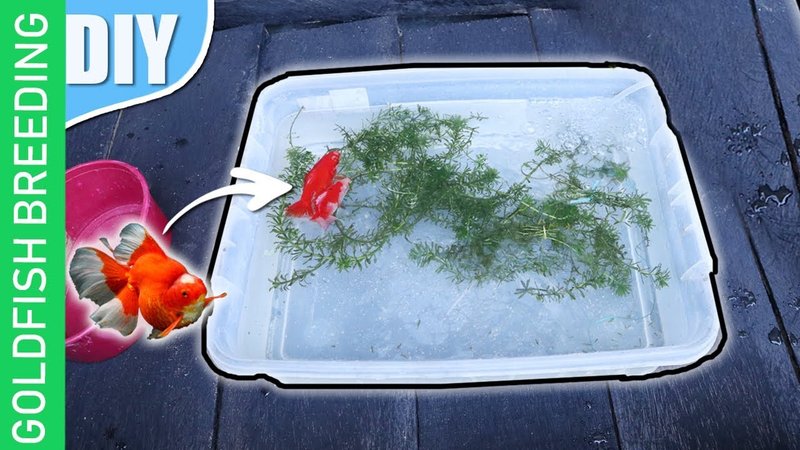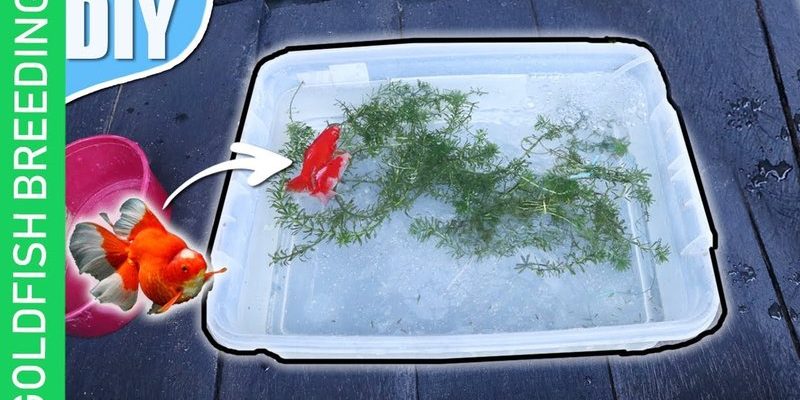
So, why would anyone want to breed goldfish at home? Well, it’s not just about expanding your aquatic family. Breeding goldfish can be a fun, educational experience, and it allows you to appreciate these fascinating creatures even more. With proper care, patience, and a sprinkle of luck, you’ll soon find yourself in the middle of a little fishy miracle. Let me explain what you need to get started on this exciting journey!
Understanding Goldfish Breeding Basics
Before diving into the actual breeding process, it’s essential to understand a few basics. Goldfish are social animals, and they thrive in pairs or small groups. If you’re thinking about breeding them, you’ll need a male and a female. Usually, males are smaller and have brighter colors, while females tend to be rounder, especially when they’re carrying eggs.
Here’s the thing: goldfish don’t have a specific breeding season like some other fish. They can breed when conditions are right, which usually means warmer water temperatures, around 70-80°F (21-27°C). This temperature mimics the natural springtime in their native habitat, prompting them to reproduce. If you want to encourage breeding, consider adjusting the water temperature accordingly.
Also, breeding requires a little bit of preparation. You’ll need a separate tank or breeding box set up for the female to lay her eggs. This can help protect the eggs from being eaten by their parents! It’s a big and beautiful cycle that can unfold right in your living room.
Setting Up Your Goldfish Breeding Tank
Creating the perfect environment for your goldfish is key. Start by setting up a separate breeding tank with a capacity of at least 20 gallons, as goldfish need space to swim around comfortably. Fill the tank with dechlorinated water and add some aquarium plants or spawning mops. These will give the female a nice spot to lay her eggs and provide cover for the little fry once they hatch.
It’s also important to ensure your tank has a gentle filtration system because goldfish can be messy eaters. You don’t want to create too much water movement, which can stress the fish. A sponge filter is often a great choice for breeding tanks since it doesn’t create strong currents, and it also provides oxygen.
Another key component is maintaining water quality. Regularly test the water for ammonia, nitrites, and nitrates to keep levels safe for your fish. You want to ensure that your goldfish have an optimal breeding environment that’ll encourage them to reproduce happily.
Choosing The Right Goldfish
You might be wondering how to select the ideal goldfish for breeding. Ideally, you should choose healthy, age-appropriate fish. Goldfish typically reach sexual maturity at around 1-2 years old. Look for fish that are lively and have bright colors. Avoid any that show signs of illness such as lethargy or discoloration.
Also, consider the type of goldfish you’d like to breed. There are various breeds, including common goldfish, fancy goldfish, and others—each with unique characteristics and care needs. If you have a specific breed in mind, try to pair two fish of that breed, which can help preserve those desired traits.
During the breeding season, watch your pair closely. Males will often chase females, nudging them, which is part of the courtship ritual. If you see this behavior, your fish are ready to mate!
Egg Laying And Fertilization
Once your goldfish have paired off, it’s time for the exciting part—egg laying! As the female gets ready to lay her eggs, she may appear rounder and more active. Watching this process is fascinating! When she’s ready, she will lay hundreds, even thousands, of tiny eggs directly on the spawning mops or plants in the tank.
Fertilization happens almost immediately after the eggs are laid. The male will swim alongside the female, releasing his sperm to fertilize the eggs. It’s vital to keep a close eye during this time. The whole process can take several hours, and then you’ll be left with a flurry of tiny, sticky eggs clinging to your tank’s surfaces.
You might be thinking, “What happens next?” Well, once fertilized, it typically takes about 4 to 7 days for the eggs to hatch, depending on the water temperature. Keep the tank dark during this time to help protect the eggs from light.
Caring For Goldfish Fry
After about a week, you’ll see tiny fry swimming around. This is where your mothering skills will really come into play! Ensure the tank is safe and clean for them. The fry are small and vulnerable, so it’s essential to provide proper care.
Start by feeding them specially formulated fry food, which is finely crushed flakes or powdered foods. This helps them grow strong and healthy. As they grow, you can gradually introduce them to larger food particles, but make sure it’s appropriate for their size!
You should also monitor water conditions closely during this fragile stage. Keeping the tank clean is crucial, but be careful with water changes, as drastic shifts can stress the fry. Try to keep the tank temperature stable and consistent as they grow.
Common Problems And Troubleshooting
Breeding goldfish isn’t without its challenges, and you might run into some common problems along the way. One issue could be that the eggs don’t hatch. This could happen if the water conditions weren’t right or if the eggs were not fertilized properly.
If you notice that the fry aren’t developing, you may need to check your water parameters, ensuring they’re within the safe range. If they hatch but aren’t swimming well, they may have been disturbed or stressed. Creating a calm environment is key.
Another problem could be the adult goldfish eating fry, which sadly happens sometimes. To avoid this, you could separate the parents from the fry shortly after laying the eggs or introduce some hiding spaces in the breeding tank.
Honestly, it can seem overwhelming, but being patient and observant will take you a long way in ensuring your newly hatched goldfish thrive.
Final Thoughts on Breeding Goldfish at Home
Breeding goldfish at home can truly be a rewarding experience. It allows you to connect more deeply with your aquatic friends and understand their life cycles better. With proper setup, care, and a little bit of luck, you’ll have a vibrant aquarium filled with lively goldfish.
Remember, every breeding journey is unique, and challenges will arise, but that’s all part of the fun! Just enjoy the process, learn as you go, and soon you’ll find yourself with a beautiful school of goldfish to admire. Embrace the adventure, and happy breeding!

